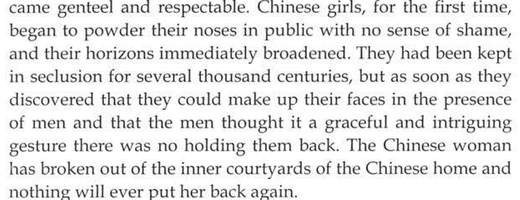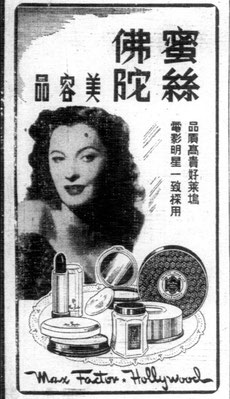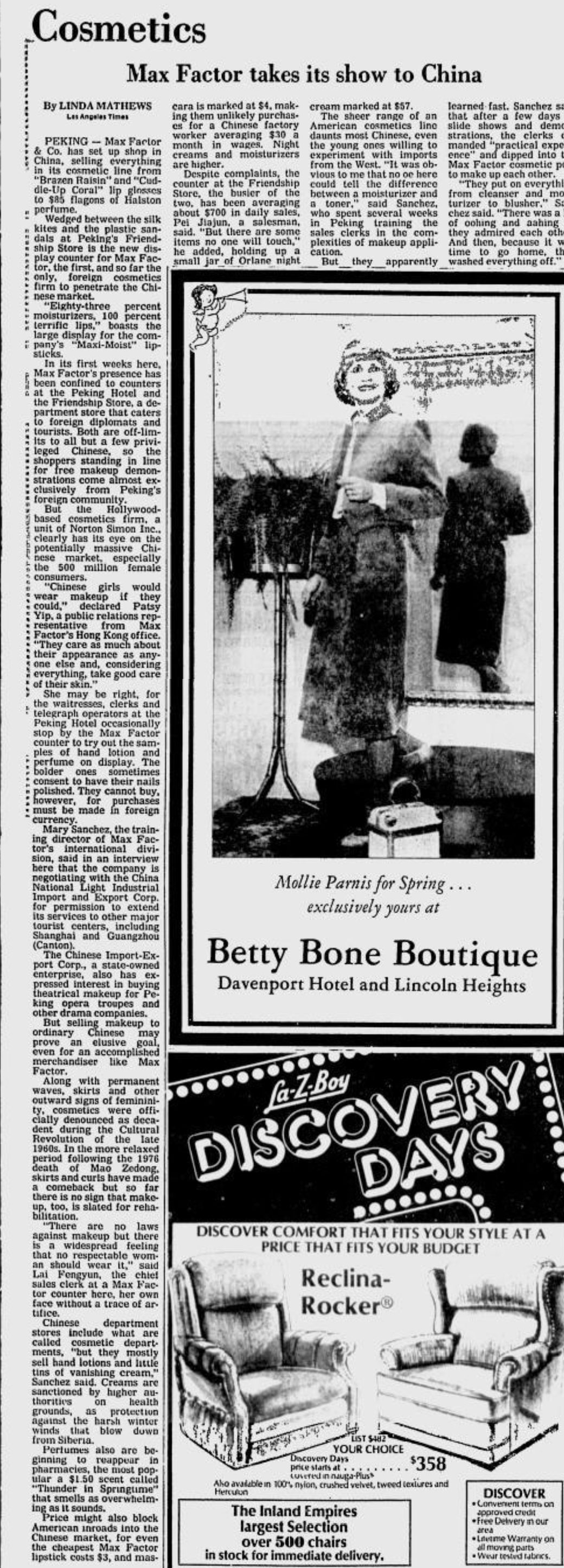
The “father of makeup” Max Factor created the signature looks of famous Hollywood icons such as Marlene Dietrich and Marilyn Monroe, but items from our collection show how his Oscar-winning cosmetics were not limited to American stars only and already enchanted common Chinese women since the 1930s.

In the glamorous world of Hollywood's Golden Age, one name stood out among the stars: Max Factor. Born Maksymilian Faktorowicz in Russia, he immigrated to the United States in 1904, later settling in Los Angeles, the epicenter of the burgeoning film industry.
Creating makeup originally for silent films, then the talkies, and, ultimately, color motion pictures, Factor designed looks for Judy Garland, Ava Gardner, Katharine Hepburn, Rita Hayworth, Bette Davis, and countless other beauties of the day. Word of Max Factor’s expertise quickly spread and in 1916 he started selling eye shadow and eyebrow pencils to a wider public, which was the first time such products were available outside the movie industry.
Four years later he launched a full range of cosmetics, calling it “make-up” – a phrase he coined. From false eyelashes, lip gloss, foundation, concealer, wand-applicator mascara, and water-resistant makeup – Max Factor put the transformative tools for make-up artistry into the hands of every woman, enabling her to create her own personal glamour statement every day.

As Hollywood's influence spread, so did Max Factor's reputation. In 1928, one year after Max Factor introduced its “Society Make-Up” range, he developed cosmetics that worked well with panchromatic film and incandescent lighting.
Following the success with this innovative new product, the Academy of Motion Picture Arts and Sciences presented Max Factor with an honorary Academy Award in 1929 for his contributions to the film industry. He was later also celebrated with a star on the Hollywood Walk of Fame.


Soon, large quantities of Max Factor Panchromatic Make-up were shipped overseas to Max Factor agencies established in London, England; Sydney, Australia; Durban, South Africa; Honolulu, Hawaii; Toronto, Canada and – Shanghai, China.
The news of the Oscar-acclaimed “Make-Up Wizard of Hollywood” indeed had made it all the way across the Pacific: for the first time, Max Factor (clumsily translated as “Màikè sīfǎ kè duō” 麥克司法克多), was introduced to local audiences through a profile in the Chinese movie magazine “Silverland” in August 1929.

This turned out to be perfect timing, during an epochal change in the Middle Kingdom when, as famous American ad man Carl Crow put it, “Chinese girls, for the first time, began to powder their noses in public with no sense of shame, and their horizons immediately broadened.”

In the early 1930s Max Factor developed an in-house public relations department and by June 1931, a first representative arrived in Shanghai, heralding the brand's official entry into the Chinese market.
In September of the same year, the American crime mystery film “Daughter of the Dragon” was released. It starred the iconic Chinese-American actress Anna May Wong, who had been styled by Max Factor and which created additional excitement for the brand in China.
Soon thereafter in October, the American Drug Company (commonly known under its Chinese name “Kofa”) was appointed as Max Factor’s first wholesale distributor in China. In parallel, the brand opened its first demonstration studio in Shanghai on 684 Bubbling Well Road (today’s Nanjing West Road) and furthermore held daily demonstrations at the cosmopolitan city’s most well-known department store, the Sincere.
By December a demonstration studio was also opened in Hong Kong at the “Tester Beauty Parlour”.

Lastly, Max Factor was now also properly transliterated with the much more fitting name Mìsīfótuó (蜜丝佛陀), which alludes to a honey-silken elixir of enlightenment. The brand uses the elegant Chinese name to this day.
The translation is sometimes wrongly attributed to writer Eileen Chang, but there is no evidence to substantiate this claim. Besides, she would have only been 11 years old in 1931. What is true however, is that Eileen Chang spent the first 5$ she made from a newspaper submission in middle school on a lipstick, but as she writes in her essay “From the Mouths of Babes”, it was by the brand Tangee, rather than Max Factor.

Be it as it may, throughout the 1930s, Max Factor's presence in China continued to grow steadily. Advertisements and advertorials in leading publications in conjunction with demonstrations at prominent venues and department stores introduced Chinese women to the magic of Max Factor's cosmetics.
Already in 1932 adverts announced the availability of Max Factor “at all leading drugstores”. The same year, the Shanghai “Max Factor Studio” was announced, now located at the China United Building on 108 Bubbling Well Road. There two specialists in the art of make-up, “Mesdames West & Maitland” consulted both Chinese and Western women on the “correct use of cosmetics to produce the right colour harmony for individual types and complexion colourings”.

In February 1933 the charity Movie Queen Contest “for girls of all nationalities” was organized in Shanghai by the Rotary Club and managed by British ad agency Millington Ltd. All winners would receive personalized Max Factor beauty sets and as a main prize, the Movie Queen was awarded a trip to Hollywood where “Mr. Max Factor, the famous beauty expert, will personally meet her and place his studios at her disposal.” The winner, the stunning Miss Nina Barsamova from Russia, was crowned by none other than Sir Victor Sassoon, Shanghai real estate magnate and one of the wealthiest men in Asia, at the Shanghai Canidrome on April 27 1933. She soon embarked on her journey to “Movieland”, where she took screen tests, but returned again to Shanghai empty-handed at the end of 1934. Barsamova married a Spanish Hai-Alai player the year after and was never heard of again.

The Shanghai Movie Queen’s story of broken Hollywood dreams, as disappointing as it may have been, luckily had no impact on Max Factor’s success in China, where sales continued to soar.
In 1935 Max Factor developed Pan-Cake Make-up to meet the unique make-up requirements of Technicolor film, and it was soon also introduced to the general retail trade. In the second half of the 1930s an increasing number of advertisements featuring the latest Hollywood stars ran in China. All of them had cut-out coupons printed on them, which could be mailed in to receive sample gifts of Max Factor cosmetics. A vey successful marketing technique, that was soon extended to sample giveaways at the latest Hollywood film screenings in Shanghai such as in September 1936 for the movie “Showboat”.

In October 1936, Max Factor’s leading make-up artist, Miss Cecil McLean, visited Shanghai to give demonstrations to local consumers.
One year later,in 1937, Max Factor cosmetics were displayed at the Better Homes Exhibition, once again organized by Millington Ltd., which very likely acted as the brands advertising agency in China during that time.
Despite the death of Max Factor in 1938, the company remained a successful family business for close to 40 years until it went through a series of acquisitions.


By 1940, Max Factor's smear-proof lipstick, "Tru-Color," had become a sensation, offering long-lasting color without irritation. It was also highly successful in China, as advertisements, sample envelopes and actual surviving lipsticks from our collection prove.
The Chinese color advertisement from our collection also stems from around that time. It features Joan Crawford and the motif was adapted from a visually similar Max Factor US ad, issued for the 1940 film “Strange Cargo”, in which the actress starred alongside heartthrob Clark Gable. We can also find the star featured in advertisements for Max Factor in Hong Kong during 1941, when the brand setup a demonstration booth in the Windsor House on Des Veux Road.

After the end of WWII Max Factor had a short comeback in China, but ultimately left the country after the establishment of the People’s Republic of China in 1949.
In 1980 the company was one of the first, if not the first, cosmetics brand to re-enter China after the opening up of the country. Max Factor shortly withdrew from the Chinese market in 2006 only to revamp its China image and come blazing back into the market in 2009 to cash in on middle-class consumers’ growing love for cosmetics. Today, after almost 100 years since it became active in the country, Max Factor’s current owner, Coty - one of the world's largest beauty companies, is once again striving to bring glamour within reach of all Chinese women.

































































Write a comment